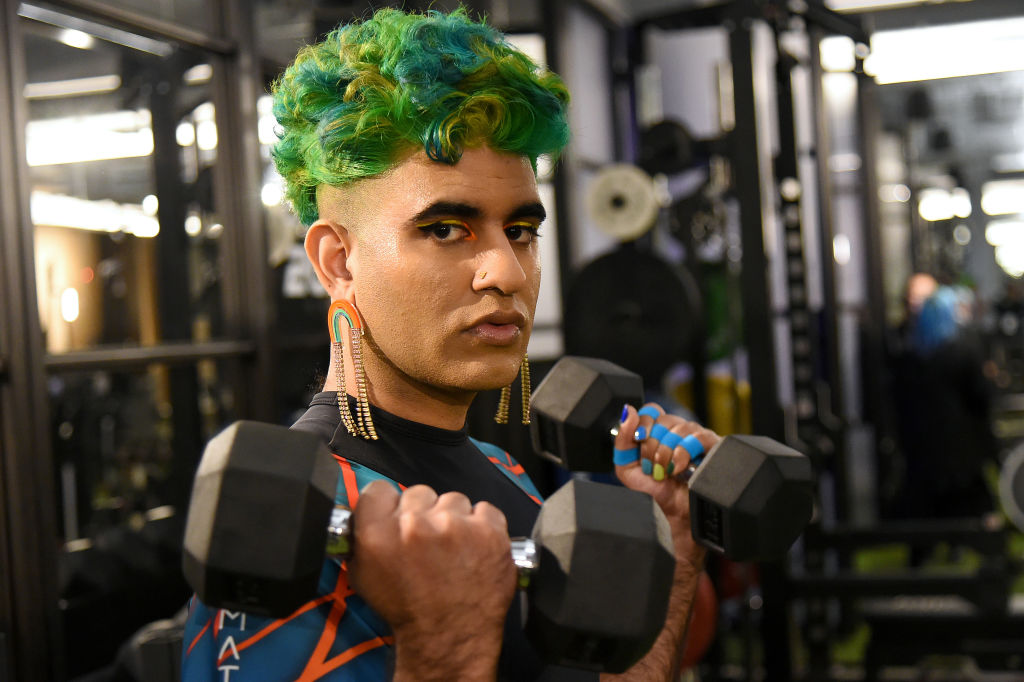Lies my Gemini chatbot tells me.
Autism and Trans

A compelling correlation has troubling implications.
A recent Psychology Today article discussed how “drastic societal changes have led to the deferment” of traditionally adult roles. In the U.S. and beyond, adults now settle down, have children, and secure employment much later in life than did previous generations. Psychologically speaking, these “emerging adults” are maturing much slower than their parents and grandparents. Which raises the question, if young adults and teens are becoming increasingly incapable of making important life decisions until much later into adulthood, why are so many parents allowing their children to make life-changing, gender-altering decisions?
The author and podcaster Matt Walsh recently asked a relatively straightforward question: What is a woman? Yet most of the people he interviewed struggled to answer. Those who hemmed and hawed included academics in the field of women and gender studies and medical doctors—people you’d expect to be able to provide a definitive answer to such a simple question. Though while they were incapable of defining what a woman is, many of Walsh’s interviewees were confident that children are fully capable of making an informed decision on whether to transition.
However, not all of Walsh’s interviewees felt this way. One of the people Walsh interviewed was a transgender man named Scott Newgent. Newgent is the founder of TReVoices, an organization committed to stopping childhood medical transitioning. Plagued by regret, the 47-year-old explained that the main reason he transitioned “was due to internalized homophobia.” Although he “was never a butch lesbian,” he still lacked “the characteristics of what society says a woman should be.” “I was an alpha woman,” he said. “I was in business sales, and I was fierce.” In a “vulnerable place and susceptible to the idea” of “fitting in,” Scott transitioned. This is a decision that haunts him every minute of every day. Scott is not alone.
Contrary to the assertions of many of the experts exposed by Walsh, transitioning is not consequence free. Transgender people are at higher risk of developing a number of diseases, including osteoporosis and cancer. Many are miserable; as the author Dawn Munro previously noted, “plagued by illness and poor nutrition,” trans people “age faster than their non-trans counterparts.” Lonely and isolated, many “live out the last chapters of their lives in substandard housing.” Unsurprisingly, research shows that, compared to the general population, suicide rates and suicidal tendencies among transgender persons are considerably higher.
So again, why are parents letting their children—some as young as 4—transition? Rollo Tomassi, an expert in the field of intersexual dynamics, explains, “Anyone who’s taken a year-one psychology class in child psychology knows that children do not have the capacity for abstract thinking until they are into their young adult years.” Somewhere around the age of 12, children develop the ability to think in abstract terms. More importantly, the prefrontal cortex, the area of the brain that plays a crucial role in cognitive control functions, doesn’t fully mature until the age of 25.
The “popular belief among the gender Woke-mob is that gender is a social construct,” said Tomassi. However, “at the same time, they’ll confidently claim that a child can be born the wrong gender.” Furthermore, he added, “they’re confident that a child that has only been on planet earth for 18 months ‘knows’ it’s the wrong gender.” Most teens, with less than fully-developed brains, are ill-equipped to make life-altering decisions. Brain development is a highly complex issue, and many aspects of learning, personality, and social adaptability are interrelated. A correlation has been found between transgenderism and autism, a disorder of brain development.
Poor Decisions and Irreversible Consequences
Compared to people whose gender identity corresponds to their sex assigned at birth, trans people are three to six times more likely to be diagnosed with autism, a neurodevelopmental condition that can be debilitating among severely afflicted individuals. Research has shown an association between young children with autism and dysfunction in the aforementioned prefrontal cortex.
Like transgenderism, autism is intimately associated with social isolation. As those afflicted tend to spend an inordinate amount of time online, even more than their neurotypical peers, it’s natural that they would gravitate towards platforms and forums that offer an escape. It also follows that they would gravitate towards the idea of another identity, a “new” me.
As Tomassi said, the autistic children who transition may have a desperate longing “to feel special.” They may crave something that makes them feel “unique.” Enter “transgenderism’s subjective definitions of identity,” which are extremely appealing “because nothing is really required for belonging other than an active imagination and enough people to feel good about themselves for praising and reinforcing it in them.”
The autism-to-trans pipeline is particularly interesting. Some researchers believe, rather justifiably, that the changing criteria for autism (it’s a spectrum disorder) has resulted in an overdiagnosis of the condition. Today, in the U.S., 1 in every 44 children is diagnosed with the disorder. In 2006, 1 in every 110 children received an autism diagnosis. Has society changed that much in a few years? I have my doubts.
At the same time, there has been an explosion in those opting to transition. As public health researchers have noted, “the number of transgender adults significantly increased over the past decade, with a current best estimate of 390 per 100 000 adults.” That works out at “about 1 in every 250 adults, or almost 1 million Americans.” According to a very recent Pew Research Center report, American adults under 30 are more likely than those over 30 to identify as trans or nonbinary (someone who doesn’t identify as a man or a woman). Some 5.1 percent of adults “younger than 30 are trans or nonbinary, including 2.0 percent who are a trans man or trans woman and 3.0 percent who are nonbinary,” reads the report.
We now live in a time where it has become customary to pathologize normal, everyday struggles. Being a teenager is tough; it’s a physical, psychological, and emotional rollercoaster. However, instead of riding it out, an increasing number of young people, enabled by overzealous parents and medical doctors of questionable merit, are getting off the ride early. Many take medication to numb the pain; others opt to medicate and transition. The children aren’t to blame. They are scared, confused, and vulnerable to peer pressure. The parents and medical professionals enabling the insanity are the ones deserving of our collective ire.
The autism to transition pipeline may not be causal, but the connection is certainly there. Autism affects a person’s decision-making abilities, and can lead afflicted individuals to make important choices based on limited consideration of later consequences, leading to future regret. Compared with their neurotypical peers, autistic individuals experience far greater difficulty with decision-making. They are more prone to anxiety and exhaustion; they’re also slower, on average, to process basic information. Of course, not every person who transitions is autistic. Nevertheless, if autistic individuals struggle to make basic decisions, perhaps their desire to transition should be given a greater degree of scrutiny than it is currently given.
The American Mind presents a range of perspectives. Views are writers’ own and do not necessarily represent those of The Claremont Institute.
The American Mind is a publication of the Claremont Institute, a non-profit 501(c)(3) organization, dedicated to restoring the principles of the American Founding to their rightful, preeminent authority in our national life. Interested in supporting our work? Gifts to the Claremont Institute are tax-deductible.
Wokeness’s war against sex and gender descends to clownish levels.
Give leftist interviewers a rake to step on.
Let's do a little regime change, one red state at a time.
The Left’s war on nature is integral to its larger project.
The gory details and irreversible horrors of "gender affirming" surgery laid bare.






